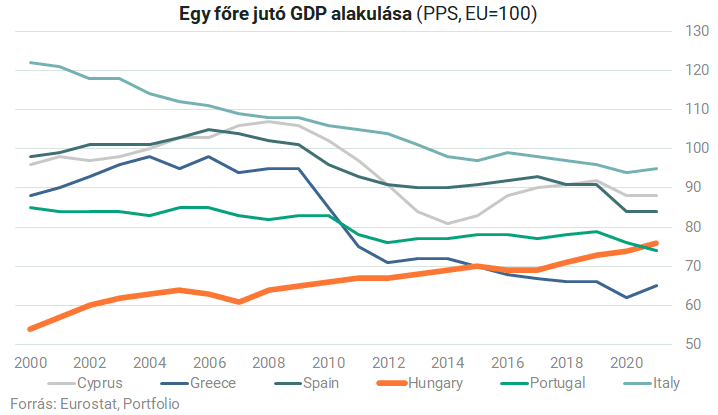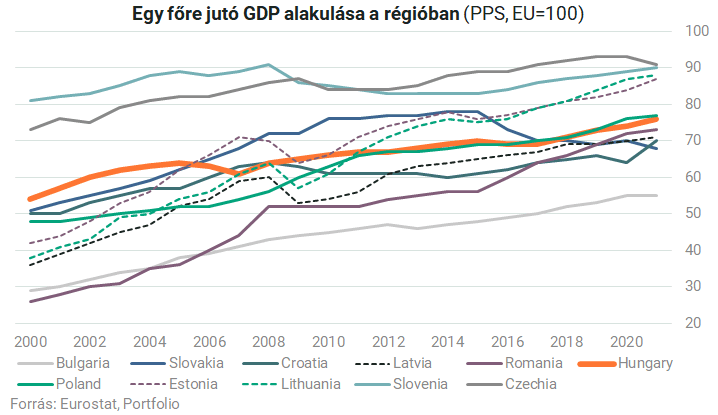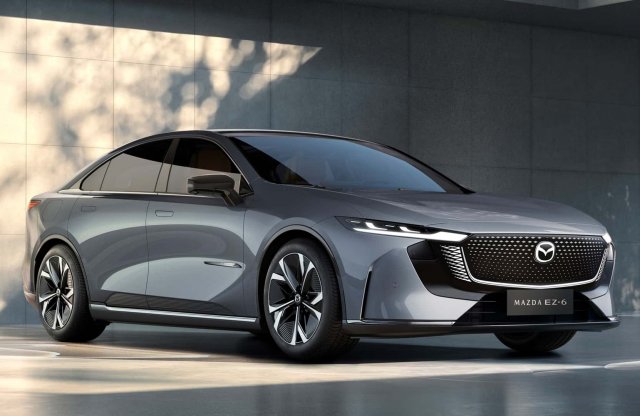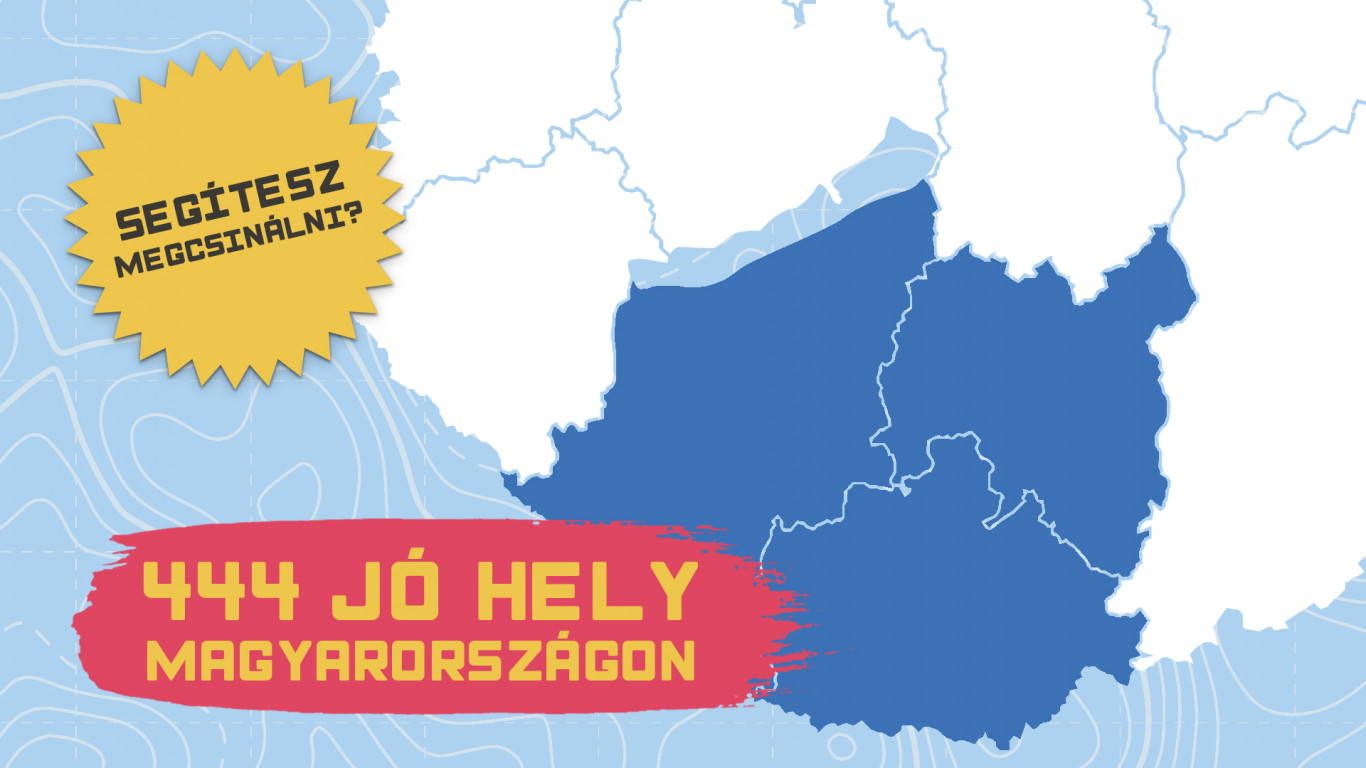Based on GDP per capita, we have the following “heat map” of Europe:
It can be seen that the region is still far behind Western European countries in terms of development, but there has been a significant catch-up compared to Southern Europe, which lags behind by a decade. GDP per capita in Greece and Portugal has already fallen within the typical range for our region.
By 2021 (confirmation of preliminary data), the Hungarian development index was ahead of the Portuguese index. The coronavirus crisis, which has hit tourism hard, may have contributed to this, accelerating the shutdowns of the two economies. With this, the second southern country in development rankings has already lagged behind the Greeks who were falling behind in the middle of the last decade.

If we study Hungarian development not in relation to the southern boundary, but in relation to the region, we will see no more transgression. According to the figure below, Hungary’s GDP per capita is in the regional midline, declining around 2010. Before us are two Baltic countries (Estonia and Lithuania), the Czech Republic and Slovenia. The Polish and Hungarian economies have been advancing side by side for a decade – and now a step further. The Slovak economy is slowly characterized by a strong divergence, leaving behind only the Bulgarian Development Index. In 2020, Romania’s GDP per capita left Slovakia last year.

If we study to what extent the countries of the region have shown a catch-up in the past decade or two, the picture confirms that the Hungarian rapprochement is in the middle. Since 2010, the Baltic states and Romania have developed faster, just as we have been looking forward since 2000.
Accordingly, the government’s catch-up plan for the next eight years is placed in an interesting context. By 2030, average development in the European Union can only be achieved if our convergence accelerates, leaving us well below 90% at the current pace. In addition, there are still three factors working against us: on the one hand, with the growth of development, the catch-up momentum slows down, on the other hand, the most important driver of employment growth may be much smaller, and on the other hand the third hand
If this happened, it would be possible in two ways: either the region as a whole would catch up with the development of the Western region, or the Hungarian path would emerge from neighboring countries.
Cover Photo: Getty Images
























![Does the Nintendo Switch 2 not even reach Steam Deck's performance? [VIDEO]](https://thegeek.hu/wp-content/uploads/sites/2/2023/06/thegeek-nintendo-switch-2-unofficial.jpg)


















